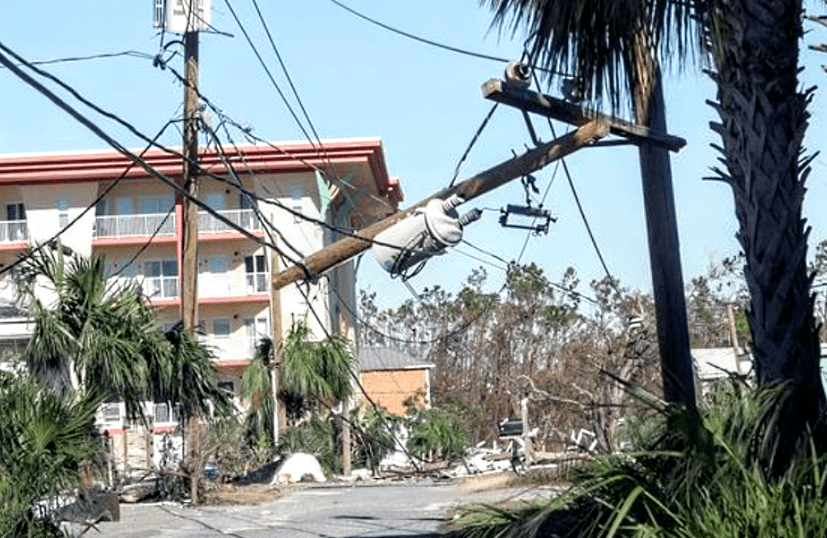Thrive
Duke Energy Florida expands ‘self-healing’ tech

In 2021, Duke Energy Florida’s innovative technology that can repair itself and re-route power helped Pinellas County residents avoid over 57,600 extended outages, saving over three million interruption minutes.
With hurricane and afternoon thunderstorm season bearing down on the area, the “smart” technology is currently on pace to shatter that record in 2022.
Ana Gibbs, corporate communications manager for Duke Energy Florida, compares the self-healing technology to GPS as a simplified way to explain the process. Just as GPS redirects a driver to a more efficient course when encountering an accident or traffic jam, Duke’s system automatically guides the power flow around problem areas.
“Very similarly, when our electric system recognizes that, for example, there’s a tree that hit a line, it can automatically reroute how our energy is moving,” said Gibbs. “So that it reduces the number of customers that will experience an outage.
“It can reduce the number of customers experiencing that outage by 75%.”
In many cases, Gibbs said, residents would not notice a problem, or the power would shut off briefly only to immediately restore itself through still-operational lines.
Gibbs said the program is part of Duke’s storm protection plan, which it submits annually to the Public Services Commission. The focus is on ways the company can strengthen the electrical grid, specifically for Florida’s daunting storm seasons.
The plan submitted this year, said Gibbs, represents a 10-year, $8.1 billion investment into the system.
As the world progresses further into the 21st century – and the capability of innovative tech increases while the cost of utilization decreases – Duke has joined a wide spectrum of industries that realize the value of automation.
Gibbs said automation allows the company to see things from its dispatch centers without sending out a crew. The value of that ability becomes even more apparent when considering the danger of sending linesmen out in storms, and that Duke cannot send out bucket trucks for repairs once winds reach 35 mph.

Gibbs said automation allows Duke to fix problems without sending crews into dangerous situations.
“Back in the day, you would have to have a lineman physically there to touch the poles and wires to make repairs and change the system,” said Gibbs. “Now, we have a variety of different types of automation that allows us to impact that system without actually having to be there in person.
“In some cases, it’s literally done automatically without our dispatchers having to do anything.”
Gibbs added that in other cases, dispatchers could solve the problem from their desk without needing to dispatch a truck.
For example, the self-healing technology – which Gibbs called one of Duke’s most advanced forms of automation – can reduce an outage that would typically involve 2,000 customers down to 400. She noted Pinellas has already encountered several significant thunderstorms this year, and the system has saved residents nearly two million minutes in outage time just halfway through 2022.
The technology is especially prominent in Pinellas, as the county “has a very high concentration of our customers,” said Gibbs.
“If you live in Pinellas County, you, in fact, are served by Duke Energy.”
The company provides electricity to 35 counties and nearly 2 million customers in Florida, with 500,000 residing in Pinellas County. Proportionately, the area is also home to a majority of what Gibbs called Duke’s self-healing “teams.”
“We have 45 self-healing teams in Pinellas, and that actually represents about 29% of the total that we have for the entire state of Florida.”
Currently, Duke provides 53% of its Florida customers with self-healing or automated restoration technology, a 14% increase from 2020. Statewide, the system helped avoid nearly 250,000 extended power outages and 17 million minutes of service interruption last year.
Predictably, the technology is especially beneficial during major storms. According to Duke’s data, the system eliminated 13,000 extended outages and saved over 1.7 million minutes of interruptions during Tropical Storm Eta in Nov. 2020.
Gibbs said that over the next 10 years, the company plans to blanket Florida with the devices and extend the service to nearly 80% of Duke’s customers throughout the state.

Pinellas County accounts for nearly a third of Duke’s self-healing devices (pictured) deployed throughout the state.
“So, when I’m telling you these crazy … you know, how many million minutes we’ve saved … that number at this point is only going to increase every year forward as we continue to install these devices.”
Duke’s priority, said Gibbs, is keeping the lights on for its customers. She noted that even during the years when the area is lucky enough to dodge named storms, summer afternoon thunderstorms can still wreak havoc on the electrical system. While trees, debris, wind and lightning are common causes of disruptions, flooding also represents a serious hazard to the grid and public safety.
Climate scientists have repeatedly sounded the alarm on the impact of climate change and sea-level rise on storms and “sunny-day flooding.” In a statement, Duke Energy Florida President Melissa Seixas noted power companies must work to mitigate those risks to electric services moving forward.
“We know that storms are increasing in frequency and intensity, so it’s important that we take steps today to protect the grid from the impacts of severe weather and increase reliability for all our customers,” Seixas said.







